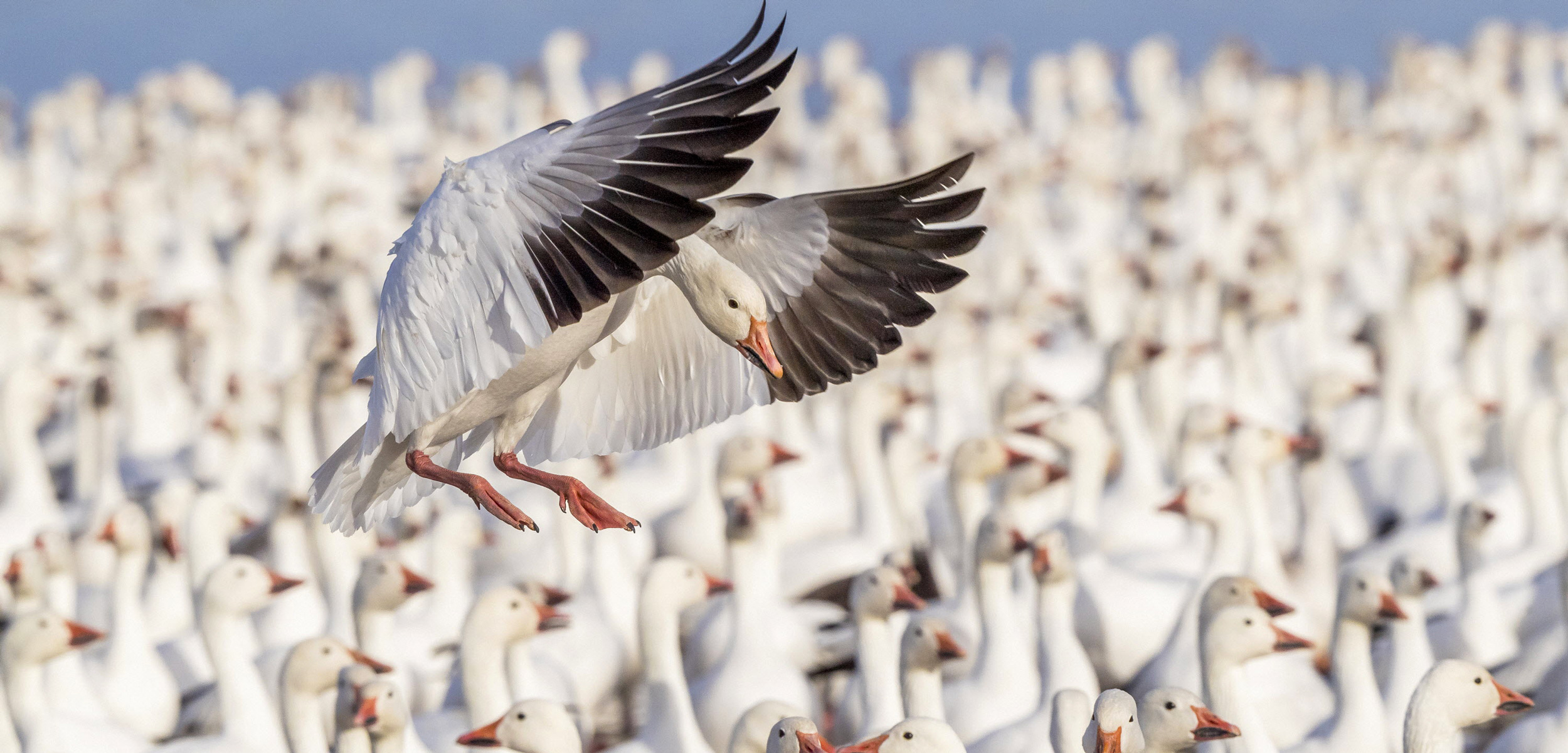Lack of Snow Is, Ironically, Helping Snow Geese
The birds’ population in northern Alaska is increasing by 35 percent per year.
Article body copy
Snow geese are aptly named: they have brilliant-white plumage, fly in blizzard-like flocks, and breed at the top of the world. Recently, though, they’re finding less actual snow when they get there. Global warming means winter snow in the Arctic is melting earlier and earlier. But snow geese on Alaska’s northern coast don’t seem to mind—in fact, the lack of snow may be contributing to a population boom.
Like many other birds, snow geese spend winters in southern parts of North America before traveling north in the spring. The Arctic offers long summer days for seeking food and few predators to worry about. “It’s an attractive place that makes it worth the trip,” says Vijay Patil, a wildlife biologist at the Alaska Science Center.
Since 2011, Patil and his colleagues have been tracking snow geese and black brants, another goose species, in the salt marshes in Alaska’s Colville River Delta. At a conference in 2019, Patil presented his findings: since 2011, the site’s snow goose population has soared, growing an average of 35 percent each year. Over the same time, global warming means spring snowmelt is coming roughly 17 days earlier. The snow geese produced more goslings in years with earlier thaws.
“The species, at least in the short term, seems to be benefiting from one of the results of a warming trend,” Patil says.
The team’s analyses, however, suggest that the population boom can’t be explained entirely by a sudden explosion of fluffy yellow goslings. Some adult geese must be migrating into the area to account for the observed increases, Patil says, perhaps from other breeding sites in the Arctic that they’ve overgrazed.
Increased migration and growing numbers of goslings could both be consequences of climate change, says Bart Nolet, an ecologist at the Netherlands Institute of Ecology who wasn’t involved in the research. “Springs are starting earlier in the Arctic, possibly driving immigration from more southerly breeding areas,” he says. “It is therefore difficult to disentangle the factors driving the population development, but at least we can see their cumulative effects.” Long-term studies like this one are vital for determining those effects, he adds.
Snow geese might be more able to take advantage of earlier snowmelt than other birds. Even if they arrive at the breeding site before new greenery has sprouted, their serrated beaks allow them to pull up buried roots and plant parts. And if they still can’t get enough food, they can use their energy reserves to lay their eggs.
While snow geese have been arriving at the Colville River Delta sooner and sooner, Patil says black brants seem to have a more cautious approach. Black brants aren’t as flexible in their breeding. If they arrive too soon in the Arctic and find snow on the ground, they might have to delay reproducing, which could make it hard for their goslings to compete with other birds when they finally hatch. Though their population also increased during the study period, it did so more slowly—by about 10 percent per year. And fewer black brant goslings survived in years with earlier snowmelt, suggesting that warmer springs aren’t entirely good for them.
Although snow geese at this site don’t seem to be experiencing any such trade-offs, that could change, Patil says. The Arctic is warming faster than the rest of the planet, so it can be hard for birds to time their migrations correctly. Snow geese may eventually start arriving so soon that their goslings can’t find enough food.
Researchers are also concerned that snow geese may overgraze their lush Arctic habitat and that their population growth may hurt other bird species that share their turf. The story of how climate change transforms an ecosystem will never be straightforward, Patil says. “There’s always going to be winners and losers.”

